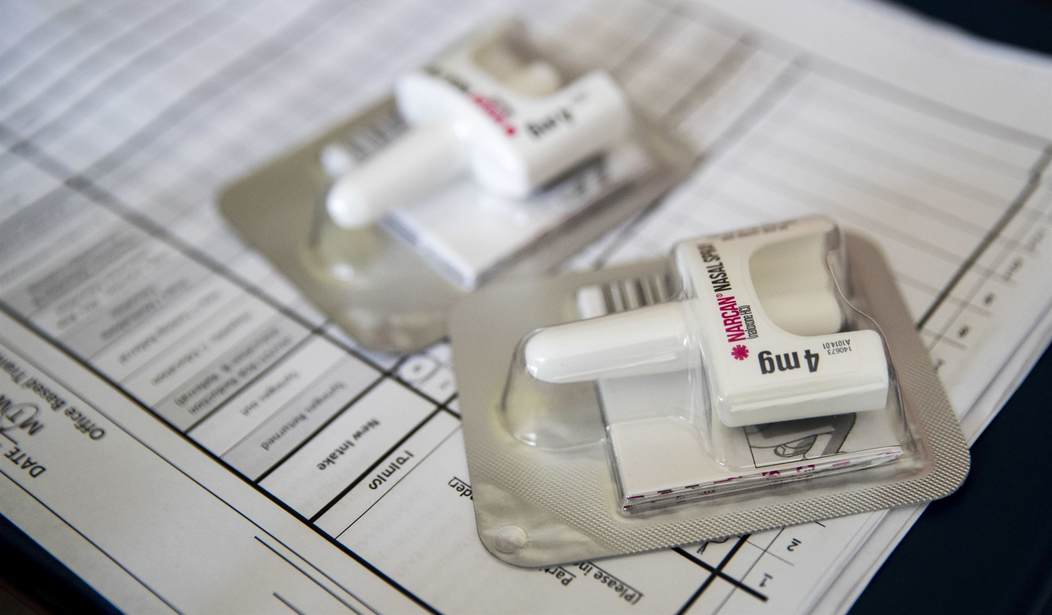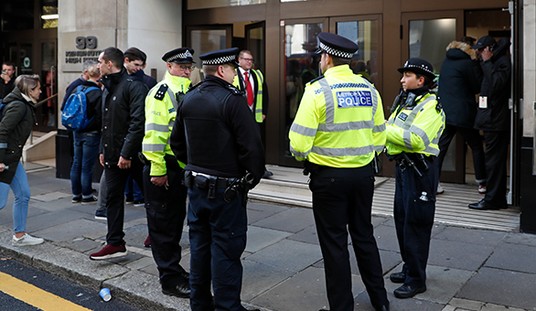The flood of fentanyl and other opioids surging into the United States from China via Mexico has long since passed the point of being a crisis. The number of drug overdose deaths registered in the country over the past two years has been unprecedented. On Tuesday, no longer able to deny the crisis, the Biden administration finally announced a plan to do something about it. They want to make the overdose “reversal” drug naloxone available to the public over the counter. But as was pointed out at the Free Beacon this morning, not only will this change be unlikely to reduce the number of overdoses, but it actually may increase public demand for fentanyl and other drugs, leading to the creation of even more addicts. This really shouldn’t be rocket science.
The White House is making naloxone, a drug used to reverse opioid overdoses, available over the counter. Public health experts say the policy is not only a tacit admission that deadly opioids such as fentanyl are here to stay but could end up creating more addicts or causing more overdoses.
“This move doesn’t address our addiction crisis in the slightest,” said Dr. Keith Humphreys, a Stanford University professor who has helped craft drug policy in multiple White Houses and in the United Kingdom. “You would never say ‘Okay, I’m rolling out a new plan for cancer for the country, we’re going to open a lot more hospice facilities.'”
The policy change was revealed on Tuesday as part of an initiative to crack down on illicit fentanyl supply chains.
Drug addicts already know that the drugs they are taking are dangerous and could lead to an overdose. The problem is that drug addicts are not famous for showing the best judgment in the moment, particularly if they are either going through withdrawal or already high on the product. Carrying around naloxone might save some people who overdose, but this relies on the user being in a competent state of mind to the point where they would know to use it or having someone else on hand to administer it. And there’s a fair chance that “someone else” is using the drugs as well in that scenario.
There is also clearly a danger that a reverse effect will be produced by such a policy. Drug addicts with a steady supply of naloxone will probably feel less worried about overdosing and be more likely to indulge or even overindulge. Even worse, if the ready availability of naloxone gives the impression that fentanyl and other opioids, natural or synthetic, are now somehow “safer,” you may see non-users being tempted to give it a try just to see what all of the fuss is about.
As pointed out in the linked report, what we’re seeing here is a continuation of the obviously failing theory among progressives that “harm reduction” is the way to fight the drug wars. Setting up “safe use spaces” and passing out free crack smoking kits and syringes isn’t doing anything to curb drug abuse and get addicts into recovery. It’s incentivizing the continued use of such drugs. The easier and more convenient you make it for people to do anything, the more of that “thing” you’re going to get.
There are things that could be done to tame this crisis. The first step would obviously be to close the border and get serious about busting up the cartels operating in the vicinity. When drugs are harder to find on the streets, addicts will be more likely to seek treatment. Going back to locking up repeat offenders might actually become effective if we invest in serious rehab programs on the inside, offering early release to those who complete such programs in earnest.
Sadly, I have my doubts that we’ll ever see such an approach taken by this administration. The “harm reduction” advocates have the Democrats completely enthralled even as the streets are filling up with dead junkies.








Join the conversation as a VIP Member